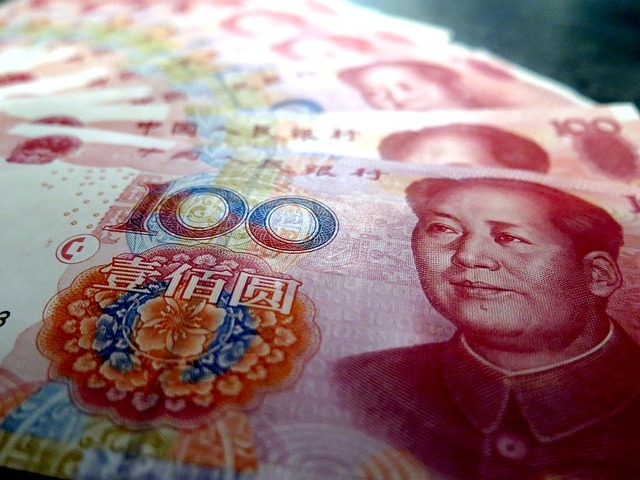Taiwanese banks' losses linked to target redemption forwards (TRF) - a structured derivative product which some investors have used to hedge yuan exposure and to speculate on currency moves - should peak in 1H16 as contracts expire and increased regulatory scrutiny limits further growth, says Fitch Ratings. Banks' losses linked to TRFs as the yuan depreciated since August 2015 have been limited thus far, but could rise substantially in the event of renewed yuan weakness.
The Financial Supervisory Commission (FSC) has estimated that banks' TRF losses have totaled around TWD4bn (USD120m). This is equivalent to about 1bp of banking sector assets, and in line with Fitch's base-case scenario. The FSC's estimate followed an examination of banks' TRF operations, after which the regulator mandated changes to improve nine banks' risk control on TRF sales. Among these nine banks, the FSC banned TRF sales for two smaller banks. The nine banks include one state bank, two foreign banks and six private-sector banks.
Fitch believes that banks' disclosures on their TRF business are insufficient. It is therefore difficult to gauge the systemic risks or potential financial impact in the event of varying scenarios. The FSC had already fined 10 banks in 2014 for selling TRF products without adequate 'know-your-customer' mechanisms in place.
That said, aggregate losses for the banking sector could be significantly higher than the TWD4bn estimated so far in the event of further yuan depreciation. Fitch conducted a scenario test in December which estimated that losses could reach up to TWD79bn if the currency were to fall beyond our base case to CNY7/USD (the exchange rate at that time was CNY6.4/USD, it is CNY6.5/USD today). This equates to around 0.2% of sector assets or 2.6% of sector equity.
Our scenario test differed from the regulator's estimate in assuming a greater rate of yuan depreciation and an assumption that investors will be less able to absorb losses. Fitch assumed a 100% default on uncovered TRF positions - positions lacking collateral - which equates to holders failing to honour 40% of losses. Under the regulators' estimates, which assumed a depreciation to CNY6.6/USD, a large part of the total marked-to-market losses was absorbed by the contract buyers or transferred into loans.
Banks should be able to absorb these losses, but it would erode returns which are already low. Fitch forecasts the sector's return on assets to be 0.6% in 2016, down from 0.7% in 2015. SMEs are among the most exposed to TRFs as the majority of the products are sold to smaller firms looking to hedge their yuan exposure from cross-strait trading business. Fitch believes that a moderate portion of TRF contracts were bought by SMEs for currency speculation. The SME NPL ratio remains very low, though, with the 90-days ratio at 0.4%. Fitch expects this to pick up in 2016, due mainly to the broader macroeconomic slowdown in Taiwan and China.
The exposure to TRFs highlights certain weaknesses in Taiwanese banks' risk governance and growing risk appetite in recent years. These factors, especially rising risk appetite, are among the principal causes exerting downward rating pressures on most Taiwanese banks. Thin margins and heightened competition have encouraged some banks to increase exposure to higher-margin offshore lending, mainly in China.
Private-sector banks are most at risk, with state banks having taken more conservative positions with regard to selling TRFs. Nonetheless, Fitch maintains that TRF losses for most private banks would be manageable, even under a scenario where the yuan depreciates further to CNY7/USD. There are some very small unrated private banks, however, where earnings capacity is sufficiently weak that TRF losses could have a substantive effect on stability.
Fitch: Further CNY Depreciation Would Add to Taiwan Bank Losses

Tuesday, February 16, 2016 6:47 AM UTC
Editor's Picks
- Market Data
Most Popular



 FxWirePro- Gold Daily Outlook
FxWirePro- Gold Daily Outlook  Impact of Iran-Israel conflict on Stocks, Gold and Bitcoin
Impact of Iran-Israel conflict on Stocks, Gold and Bitcoin  FxWirePro- Gold Daily Outlook
FxWirePro- Gold Daily Outlook  FxWirePro- Gold Daily Outlook
FxWirePro- Gold Daily Outlook  FxWirePqro- Gold Daily Outlook
FxWirePqro- Gold Daily Outlook  FxWirePro- Gold Daily Outlook
FxWirePro- Gold Daily Outlook  Hedera hashgraph
Hedera hashgraph  FxWirePro- Gold Daily Outlook
FxWirePro- Gold Daily Outlook 































